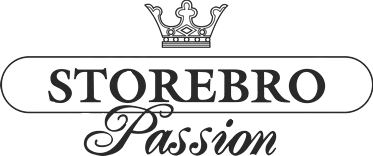

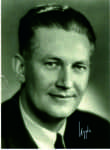
|
|
Company founder Ivar Gustafsson |
In 1933 Ivar Gustafsson, his brother Sigurd and their friend Georg Larsson from Storebro founded the company Örnmaskiner AB. Ivar had started his career in 1923 as an errand boy and drawing assistant at Storebro Bruks, a manufacturer of lathes. With regard to the simple school education this was a good position. However, the economic situation was so bad that his employer could not pay him a salary in 1932.
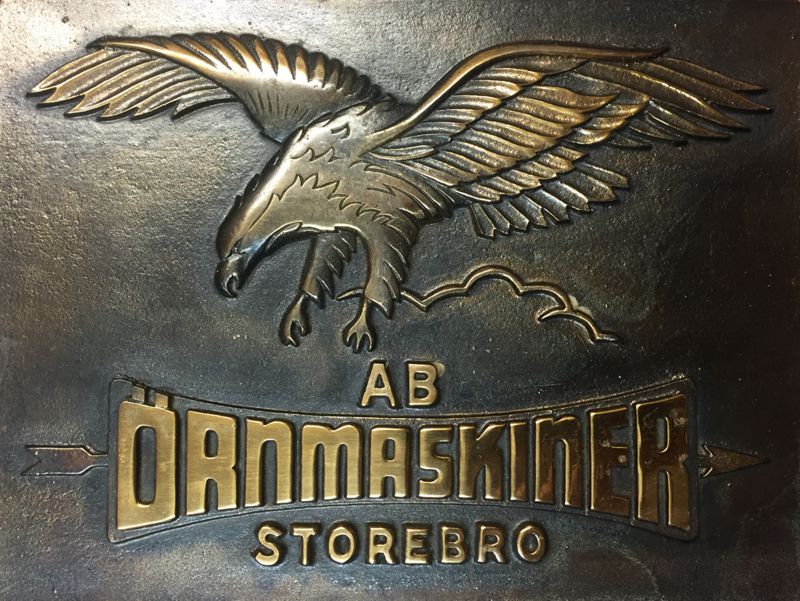
|
|
Logo of the firm Örnmaskiner |
Ivar invested the accumulated wages and bought the right to manufacture on a lathe from his employer for part of the amount. This laid the foundation for a successful business, which soon became known in the village as "day and night", as the young owners worked tirelessly.
In 1946, the existing product portfolio was expanded to include leisure boats after Ivar observed Estonian refugees on Fredensborgs Herrgård working on a rowing boat during a walk in 1945. These men worked in their home country both as fishermen and boat builders. Ivar Gustafsson was impressed by their skills and provided facilities to build more boats. In 1946 Ivar bought the farm Storebro Gård as an extension for the production of his original company. These premises have now been converted into a shipyard by the newly employed boat builders. For this purpose the divisions in the original cattle shed were removed and larger premises were created. The production of small fishing boats was the origin of the shipyard.
In the post-war period, the demand for machine tools was higher than the production. But Ivar Gustafsson also had to sell his boats. As a solution, he sold his lathe with a Storebro boat in a package.
This meant that many companies in Sweden also owned a boat from Storebro. The boats impress with their craftsmanship. But they were not really suitable for all Swedish waters. The boats were a bit cumbersome to handle and required a helmsman at the stern. Ivar Gustafsson soon realised that a self-propelled boat was needed for the Swedish lakes and archipelago.
It all started with the "camping boats" which were designed by the company Electrolux to support the distribution of their civilian Archimedes outboards. As one of the boat manufacturers Storebro produced the so called "Electrolux boat" in three different versions since 1947.
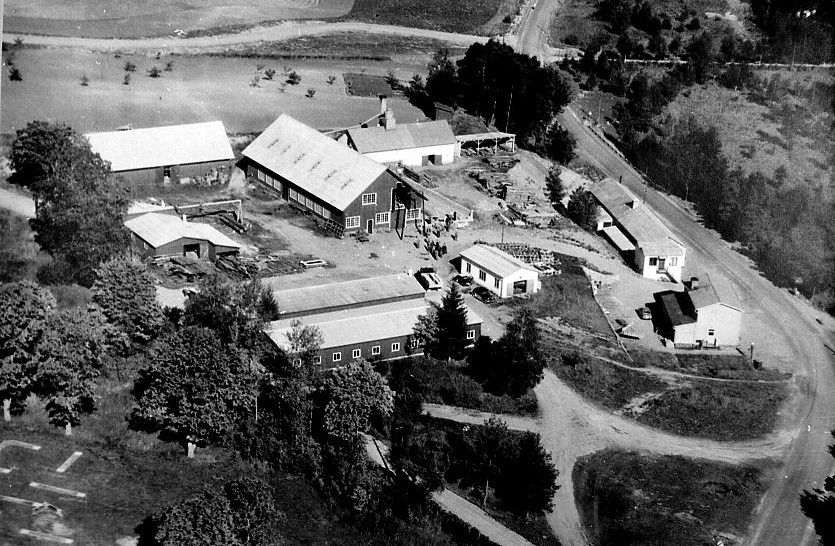
|
| Yard in Storebro 1950 |
The market grew rapidly and Ivar Gustafsson wanted to enter the market with his own design. To do this, he contacted the boat designer Einar Runius and the Penta representative in Stockholm Gösta Berg. In 1949 Tage Truedsson started his work as production manager for Örnmaskiners boatbuilding business.
In 1951 the young shipyard presented the "Vindö" and the "Solö Ruff". These boats became a real success. Together, the two series reached almost 1,000 boats produced by the beginning of the 1960s. In parallel, the "Örnen" boats were produced. The "Örnen" (Eagle) was built as a fishing boat in about 50 units. Overall, the shipyard now focused exclusively on boats with inboard engine.
In 1956 the shipyard presented the "Svanö" and later the sister ship "Bergö". But the market demanded larger boats.
In 1959, the shipyard presented the first Storö I. The ship was developed by Otto Scheen jr. and was the starting point for a number of boats named Storö.
On 01.01.1963, AB Örnmaskiner took over the entire shares of Storebro Bruks AB after the highest bid had been made. With the takeover of Storebro Bruks AB, AB Örnmaskiner also became the sole owner of AB Storebro Gjuteri (foundry). The new company developed quite positively and grew especially in export. It was therefore decided to take over the well-known name "Storebro Bruks AB". On 05.05.1964 the AB Örnmaskiner took over the name Storebro Bruks Aktiebolag.
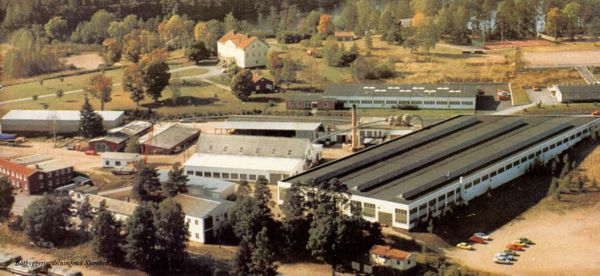
|
| Yard in Storebro |
Several family members worked in the now larger company. These included the remaining founders, their sons, daughter and nephew. Roy Ivarsson and Dick Gustafsson took care of the sale of machinery and boats, cousin Elsebeth Gustafsson organized the purchase of materials and Lennart Ivarsson worked for the boat division when he joined the company in 1965. When he joined the company, the development of a larger boat of about 10 metres in length was being planned.
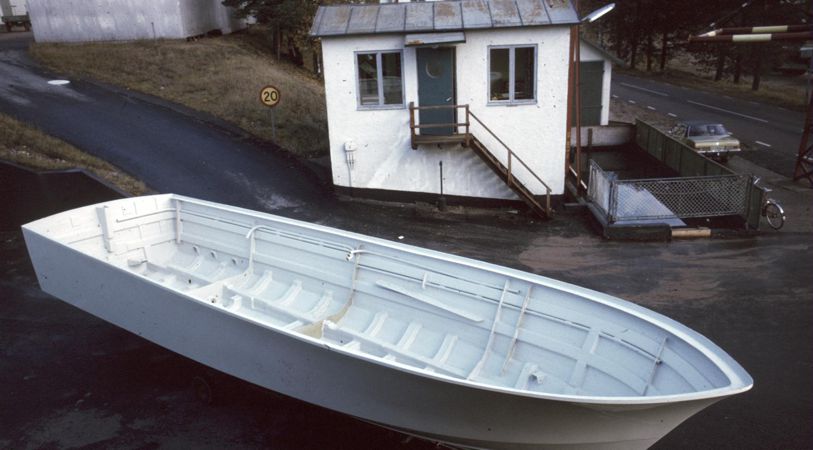
|
Previously, the offices were located in the vicinity of the mechanical engineering department. For Lennart Ivarsson an office was then created in the direct area of the shipyard. The picture shows the first office rooms. For this purpose, the original premises of Ivar Gustafsson's company Örnmaskiner were used. These consisted of two offices, which were used as sales office and design office, and the workshop behind them. Until 1962, the workshop was used to equip the boats with engines, and later for the production of fiberglass parts. In 1967 the first GRP-hull form for the Royal Cruiser I (Solö Lyx II) was built here. In the design office Einar Runius drew the hull lines of the Royal Cruiser IV (34). Right of the building the test tank is shown in which all finished boats including the Royal Cruiser 34 were checked for the engines function and the boats tightness. Later larger boats were later tested in Västervik.
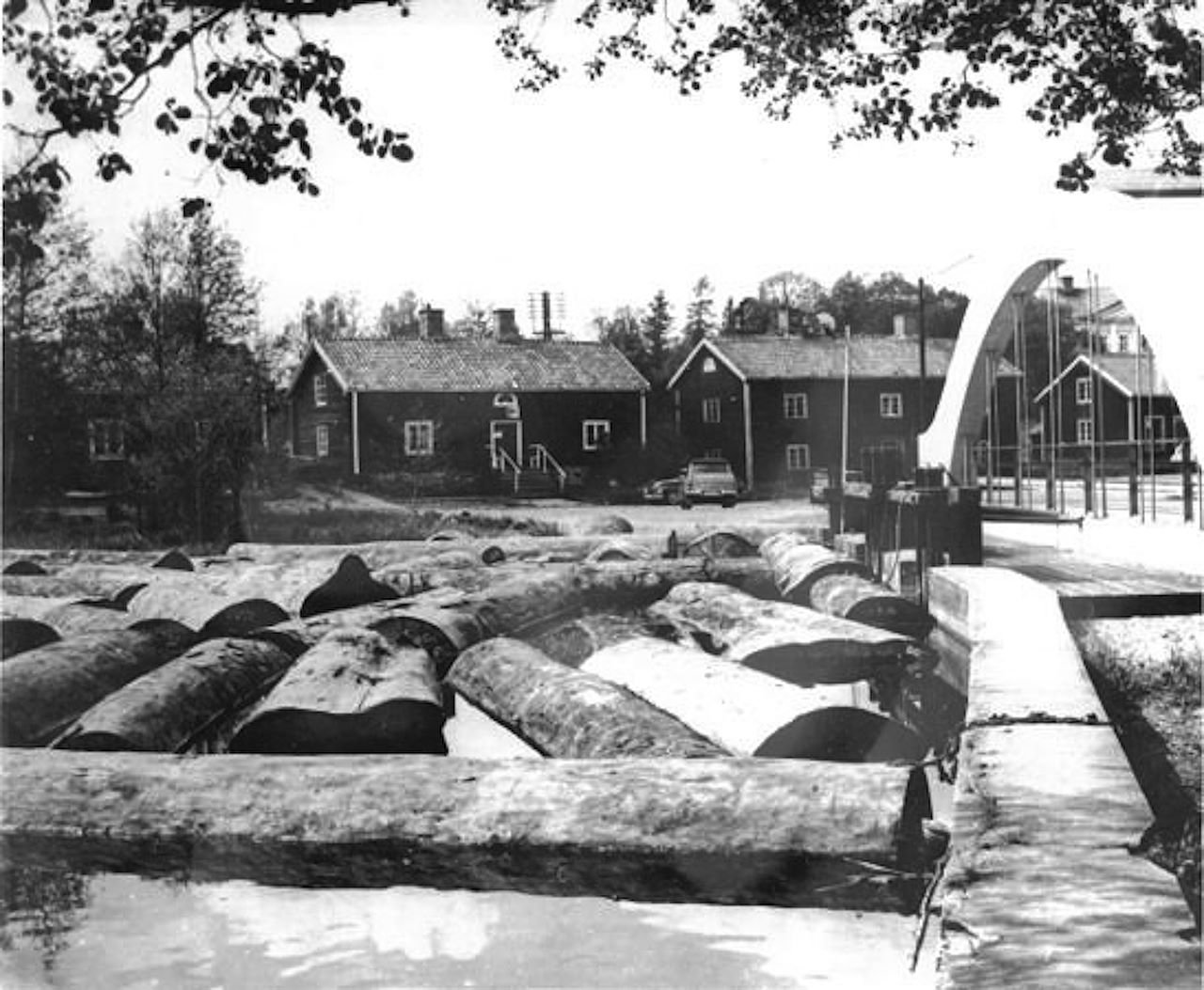
|
In 1965, both the "Storö III" and the "Storö IV" were presented. The latter was one of the most popular boats of the shipyard with about 800 built boats. Originally, 1,230 boats were specified, but this figure could not be confirmed on the basis of the shipyard documents. The hulls of these boats were still built completely in mahogany on demand, although GRP-hulls for the Storö IV were on offer since 1968. The wood used for the production of the boats was bought by the shipyard in complete logs and stored in the water in direct shipyard environment to prevent cracking of the logs. The picture shows the logs near the water mill (today Bruksmuseum).
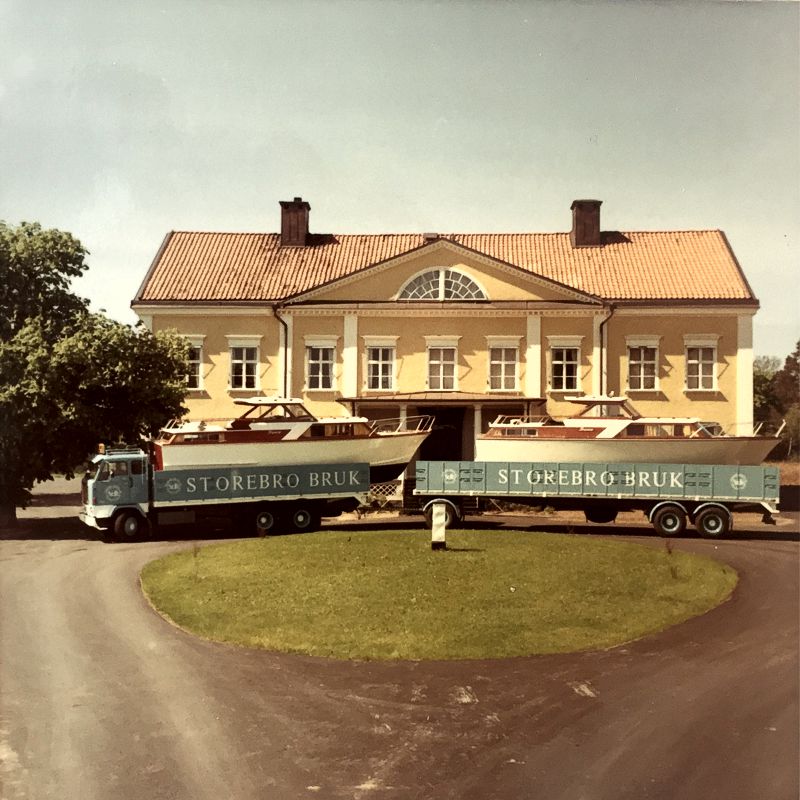
|
| Herrgården in Storebro |
In 1968 the company acquired manor house "Herrgården" as a common office building for all divisions of the company.
The construction of the Storö V (47) demonstrated the existence of the spatial limits of the buildings in Storebro and let appear a waterside location makes sense.
So in September 1968 the location in Västervik with its 280m long quay was acquired. Ivar Gustafsson charged his son Lennart with the construction and renovation of the site with new production- and GRP-Hall. First ship was the first half finished Storö V which was transported overnight on icy roads and because of its proportions with police escort and various accompanying trucks to Västervik and completed there. This Storö V was then launched on 1969-12-18.
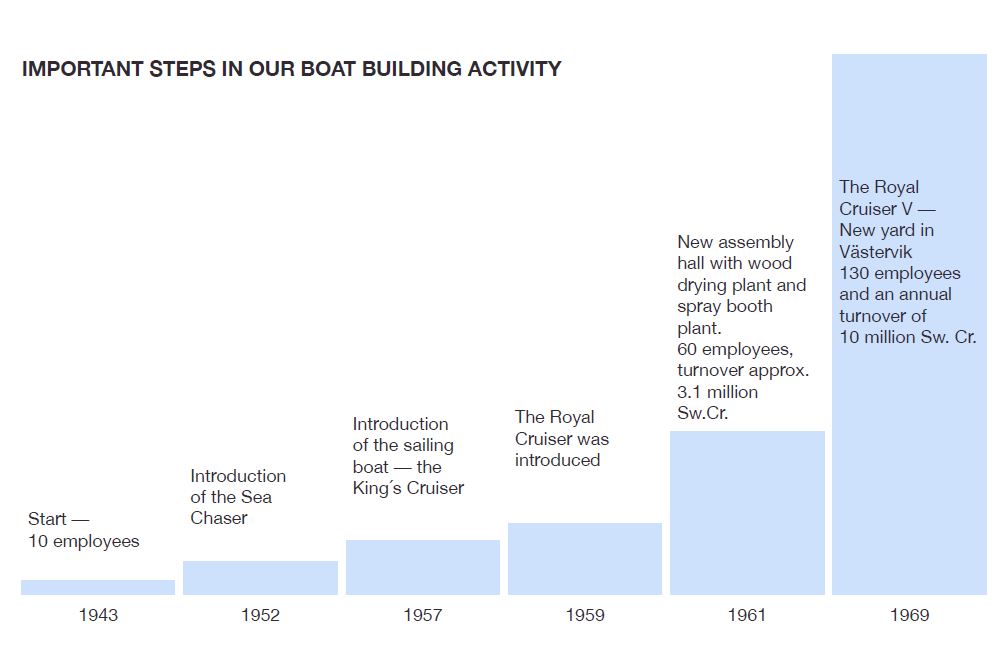
|
| Turnover 1945-1969 |
In Västervik later all fiberglass parts, both hulls and small parts were manufactured. Later the GRP production facility was upgraded in Västervik as for Sweden's most modern facility with air-exchange capacity of up to 77,000 m³/hour.
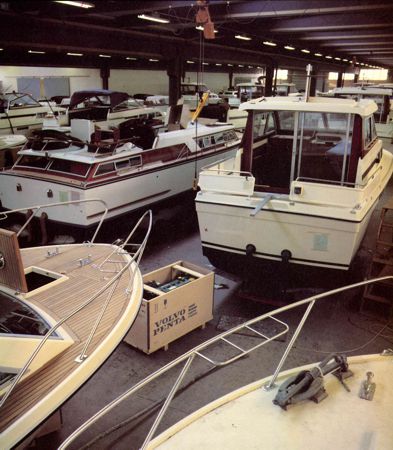
|
|
Production in Storebro |
With two existing sites production also could be split. So Storö V, Storö 43, Storö 38, 40 and the SRC 470/500 were built in Västervik. Some models like the sailing yachts Carter 40 (Havsörnen 40), Carter 42, Storebro 33 and the Storebro 90E for the Navy were built at both locations. The other models were produced in Storebro.
While the construction was established in Storebro the development of new prototypes was carried out in Västervik, since there was also the making of the molds.
Furnitures for the larger series were prepared in Storebro. Smaller units could also be produced in Västervik. All upholstery work was carried out in Storebro.
With the introduction of "Storö 43" (the last full wooden boat), resp. the prototype "Storö 42", the nomenclature of Roman numerals was converted in 1972 to the length in feet because the previous nomenclature let no space between the "Storö IV (34)" and the big "Storö V (47)".
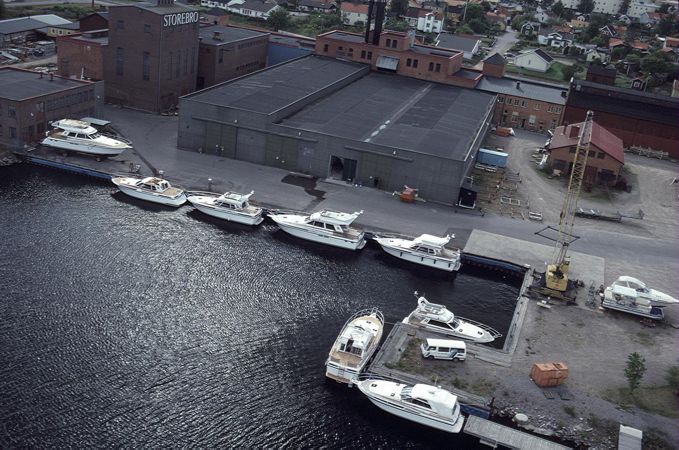
|
|
Yard in Västervik 1991/92 |
In April 1988 the boat building activities were spinned off from the overall group Storebro Bruks AB to the daughter company Storebro Royal Cruiser AB. Manager of this company became Lennart Ivarsson.
Until 1995, the shipyard was owned by the brothers Roy and Lennart Ivarsson and their cousin Elsebeth. She then sold her shares in 1995 to the long-standing customer Hans Mellström, founder of WM-data (see Wikipedia ( sw.)).
sw.)).
In February 1995, the upholstery was spinned off and acquired by the previous manager Martin Risén and his wife. It was continued as an independent company "Storebro Tapetseri & Inredning AB". This company produced until its bankruptcy in mid-2012 all upholstery and tarpaulins for the current Storebro boats.
In 1997 Roy and Lennart also sold their shares to Hans Mellström, after Roy wanted to spend more time with his family.
1999 Hans Mellström bought (now the sole owner of Storebro Bruks) the brands Nimbus and Ryds from Harald Wiklund and his sons, Lars and Hans and founded "Via Mare Boats".
The new shipyard group now had several sites for each part of the production. Under these circumstances the site Västervik was sold to the Norwegian company Windy Boats AS in 2002 that was looking for a location in the EC and the Baltic Sea.
2004 Hans Mellström then sold 51% of Via Mare Boats to a consortium including Lars and Hans Wiklund. As part of the model development, it was decided that Nimbus boats builds the boats up to 40 feet and the Storebro should produce boats above 40 feet.
After 2003, when the production of most Storebro boats was set, the SRC 410 Commander was the only Storebro model. The boat shares the hull with the Nimbus Nova 42. After the extension of the deck shell, which exclusively benefited the cockpit and the bathing platform, the boat was produced as SRC 435 Commander until 2014. In addition the Paragon 31 and 25 were built in Storebro. 2011 the SRC 435 SunTop was presented, instead of a flybridge she was equipped with a large sun deck and because of the lower height she is has channel abilities.
In 2006 the venture capital firm Altor Equity Partners invested in Nimbus Boats and thus also in Storebro, Ryds and Paragon as a major shareholder with a capital increase of 150%. Mid-2012, Nimbus Boats declared bankruptcy although they had a positive order situation.
In September 2012 Nimbus was taken over by the Swedish Investment Holding R12. Storebro (which means rights and properties) was then sold to the present owner Roger von Haugwitz. The new company name is now "Storebro Boats AB".
Von Haugwitz also acquired the "Storebro Tapetseri & Inredning", which also declared bankruptcy due to the bankruptcy of Storebro. The new company was named "Nya Storebro Tapetseri & Inredning AB".
In November 2013 the first pictures of a SRC 460 Commander were presented at a customer meeting in Storebro. At the moment it looks as if these plans will not be realized.
On 2014-01-14 Storebro Boats AB announced the aquisition of the Swedish Nordwest-yard. In the autumn of 2014 nearly all employees were dismissed. In 2015 the new company showed a profit for the first time. Meanwhile the company domicile of both companies was moved to Älvsjö, Stockholm.
In autumn 2016 the Storebro 31 was publicly presented as a new project. Unfortunately this project, like the SRC 460 Commander, has not yet reached the production line status.
In 2020, the shipyard announced its intention to build ships again. On the one hand, the SRC 435 Commander was relaunched and offered at a favourable package price, on the other hand, the SRC 350 Biscay was introduced. While the SRC 350 Biscay has not left the development stage (and has grown in size in the meantime), four ships of the SRC 435 Commander have still been built as of 2024.
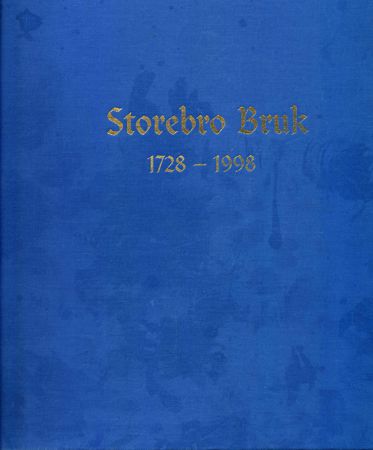
|
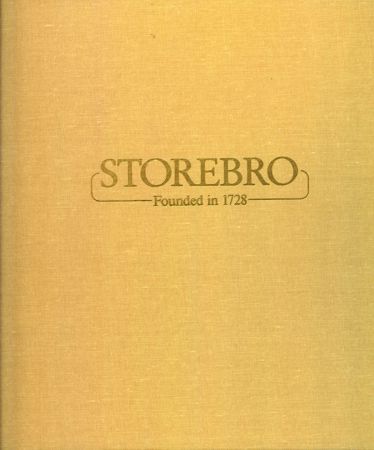
|
Further information about Storebro Bruk history can be found in the two books "Storebro Bruk - 1728-1998" (ISBN 91-631-0278-1) und "Storebro - Founded in 1728". The books are available at the following address: Stiftelsen Brukskultur, Box 20, 59870 Storebro, Sweden.